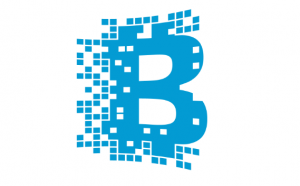
When everyone is considering implementation different projects using Blockchain (distributed ledger) technology, it becomes key for Blockchain architects and leaders to pay attention to some of the key considerations including challenges related with blockchain projects implementation.
On the lighter note, the comic strip below is a representation of the need for Blockchain architects required to get into several details including different architecture considerations before starting on a blockchain projects.

Figure 1. Blockchain Architects getting into architecture details of Blockchain Projects
In this post, you will learn about key considerations to be made by Blockchain architects and leads before starting on the Blockchain projects.
Blockchain Project Implementation – Key Considerations
- Learning from similar project implementations: Analysis of blockchain-related implementations in similar and/or related companies; The following are some of the topics to consider for analysis:
- Security
- Transparency
- Provenance (traceability)
- Value-proposition analysis: Key values added (impact made) to the related business in past and whether it would be worth implementing the use case using blockchain
- Security challenges: Security architecture and techniques used for measuring and monitoring performance of data security in distributed ledger
- Transaction management: Transactions form the key to Blockchain implementations; The following are some of the considerations to be made in relation to transaction management:
- Transaction timeliness
- Transaction version control
- Data integrity
- Communication backbone
- Storage relation considerations in relation to transaction management
- Consensus mechanisms: Selection of appropriate consensus algorithm for transaction management vis-a-vis blockchain; This could be one of the key criteria which may impact the adoption of one tool over other tools due to support for custom consensus algorithms. In case of building permissioned blockchain, there are frameworks such as Hyperledger Fabric which provides the consensus service (ordering service) out-of-the-box, and, also allows custom identity management to be plugged in.
- Identity Management: When creating a permissioned blockchain, identity management considerations become important. There are frameworks such as Hyperledger Fabric which provides the identity management out-of-the-box and also allows custom identity management to be plugged in.
- Usage of Smart contracts: When creating financial or any other types of solutions, smart contract considerations need to be made in the sense whether and how much they are required to be used. Different frameworks have a different way of implementing smart contracts. For example, for building permissioned Blockchain using Hyperledger Fabric, smart contracts are implemented as chaincode.
- Application integration challenges: Considerations on how blockchain implementation will be integrated with other applications within business boundary and outside of the businesses
- Blockchain member organizations collaboration challenges: Integration/collaboration challenges in relation to Blockchain participant organizations
- Infrastructure considerations: Infrastructure related requirements for blockchain application and related challenges. This could include considerations for using cloud infrastructure (Azure, AWS etc) vis-a-vis private data centers for hosting blockchain and related integration and security challenges.
- Storage considerations: Data is key in distributed ledger implementation; Considerations need to be made in relation to storing ledger data and related state in file or database. The permissioned blockchain framework such as Hyperledger Fabric supports Blockchain participant organizations considerations need to be made in relation to their adoption of storage options.
- Custom tokens worth value: This includes considerations for custom tokens which can be transacted on the blockchain for rewarding the participants’ organizations. This is where ICO comes into the picture.
- Incentivize Participant Organizations: Considerations in relation to incentivizing the blockchain participant organization playing a key role in implementing the transaction, storage, and consensus services.
- Blockchain implementation best practices: Best practices in relation with some of the following:
- Whether to public, private/permissioned or hybrid (public permissioned) blockchain
- Design & architecture related best practices
- Tools & Frameworks Adoption: Tools and frameworks used by similar/related companies for implementing blockchain
- Performance metrics: Techniques for measuring the performance of Blockchain applications
- Risk analysis: Risks related to blockchain implementation and risk mitigation strategies
- Failure analysis: Examples of failure of blockchain implementation in past in related industry; Lessons learned from the failure instances
- Human Resource consideration: Technical resources (developers, architects, functional experts) required for blockchain project implementation and challenges related to hiring them quickly
Summary
In this post, you learned about key considerations required to be made by Blockchain architects, leads before starting the Blockchain project.
Did you find this article useful? Do you have any questions about this article or suggestions regarding what else needs to be considered by Blockchain architects, stakeholders prior to starting Blockchain project implementation? Leave a comment and ask your questions and I shall do my best to address your queries.
- Coefficient of Variation in Regression Modelling: Example - November 9, 2025
- Chunking Strategies for RAG with Examples - November 2, 2025
- RAG Pipeline: 6 Steps for Creating Naive RAG App - November 1, 2025
I found it very helpful. However the differences are not too understandable for me